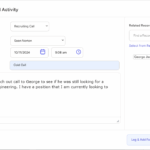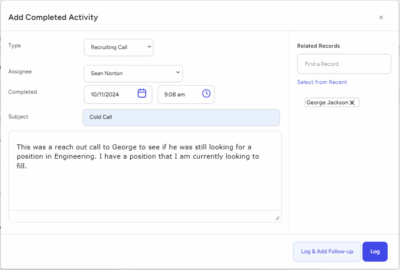Workflow automation software is a type of software that allows organizations to automate routine business processes and streamline workflow. These processes can range from simple tasks like data entry to complex workflows involving multiple teams and systems.
Workflow automation software is designed to increase efficiency, reduce errors, and save time and resources by automating repetitive tasks and workflows. This can help organizations to improve productivity, reduce costs, and improve customer satisfaction.
At its core, workflow automation software is a tool that helps organizations manage their business processes more effectively. It does this by providing a central platform for designing and managing workflows, as well as automating routine tasks and processes.
Workflow Automation Software Features
Workflow automation software typically includes the following features:
Workflow Design and Management: The ability to design and manage workflows is a key feature of this software. This involves creating a visual representation of the workflow, including the tasks and decision points involved. Many workflow automation software platforms provide drag-and-drop interfaces for creating workflows, making it easy for non-technical users to create and modify workflows as needed.
Task Automation: One of the key benefits of this software is the ability to automate routine tasks. This can include tasks like data entry, document generation, and email notifications. Automating these tasks can help organizations to save time and reduce errors, as well as freeing up employees to focus on more complex and strategic tasks.
Integrations: Most workflow automation software platforms provide integrations with other business systems and tools. This allows organizations to automate processes that span multiple systems, such as customer relationship management (CRM), enterprise resource planning (ERP), and project management tools. Integrations can also help to streamline workflows by reducing the need for manual data entry and reducing the risk of errors.
Reporting and Analytics: This software typically provides reporting and analytics tools that allow organizations to monitor and optimize their workflows. This can include metrics like workflow completion rates, cycle times, and error rates. Reporting and analytics tools can help organizations to identify bottlenecks in their workflows and make data-driven decisions to optimize processes.
Customization and Flexibility: Workflow automation software is typically highly customizable and flexible. This allows organizations to tailor their workflows to meet their specific needs and adapt to changing business requirements. Customization and flexibility can also help organizations to stay agile and responsive to changes in the market and business environment.
Workflow Automation Software Uses
Some examples of how workflow automation software can be used include:
Employee Onboarding: Employee onboarding involves a range of tasks, from collecting personal and employment information to assigning tasks and responsibilities. Workflow automation software can be used to automate many of these tasks, such as sending out welcome emails and setting up new employee accounts.
Sales Order Processing: Sales order processing involves a number of tasks, including order entry, order verification, and fulfillment. Workflow automation software can be used to automate many of these tasks, such as generating purchase orders and sending out order confirmation emails.
Customer Service: Customer service workflows can involve a range of tasks, from answering customer inquiries to processing returns and refunds. Workflow automation software can be used to automate many of these tasks, such as sending out automated responses to customer inquiries and generating refunds automatically.
Workflow automation software is a powerful tool for organizations looking to streamline their business processes and improve efficiency. By automating routine tasks and workflows, organizations can save time and resources, reduce errors, and improve customer satisfaction. The key features of this software include workflow design and management, task automation, integrations, reporting and analytics, customization and flexibility.
Workflow Automation Software Best Practices
Recruiting and hiring top talent is a critical function for any organization, and it can be a time-consuming and resource-intensive process. However, with the right workflow automation software, organizations can streamline their recruitment and hiring processes, reduce errors, and improve the candidate experience. Here are some best practices for using this software to recruit and hire top talent:
Define Your Recruitment Workflow
The first step in using workflow automation software to recruit and hire top talent is to define your recruitment workflow. This involves mapping out the various stages of the recruitment process, such as job postings, resume screening, interviews, and background checks.
Once you have defined your recruitment workflow, you can use this software to create a visual representation of the workflow and automate routine tasks, such as sending out job postings and scheduling interviews.
Integrate with Applicant Tracking Systems
Many organizations use applicant tracking systems (ATS) to manage their recruitment processes. Workflow automation software can be integrated with ATS to automate routine tasks and streamline the recruitment process.
For example, this software can be used to automatically create new candidate profiles in the ATS when a resume is received, or to automatically update candidate profiles with new information after an interview is conducted.
Automate Resume Screening
Resume screening is a time-consuming process that involves reviewing numerous resumes and cover letters to identify qualified candidates. Workflow automation software can be used to automate this process by using machine learning algorithms to screen resumes and filter out unqualified candidates.
This can save recruiters a significant amount of time and reduce the risk of human error. However, it is important to ensure that the algorithms used for resume screening are fair and unbiased, and do not inadvertently discriminate against certain candidates.
Schedule Interviews
Scheduling interviews can be a time-consuming process that involves coordinating multiple schedules and finding a time that works for everyone involved. Workflow automation software can be used to automate this process by allowing candidates to schedule interviews directly through an online scheduling tool.
This can save recruiters a significant amount of time and reduce the risk of scheduling errors. It can also improve the candidate experience by providing a more streamlined and efficient scheduling process.
Conduct Automated Background Checks
Background checks are an important part of the recruitment process, but they can be time-consuming and expensive. Workflow automation software can be used to automate this process by conducting automated background checks on candidates.
This can save recruiters a significant amount of time and reduce the cost of conducting background checks. However, it is important to ensure that the automated background checks are conducted in compliance with relevant laws and regulations.
Monitor and Optimize Your Recruitment Workflow
Once you have implemented workflow automation software to recruit and hire top talent, it is important to monitor and optimize your recruitment workflow on an ongoing basis. This involves using analytics and reporting tools to track key metrics, such as time-to-hire, cost-per-hire, and candidate satisfaction.
By monitoring these metrics, you can identify bottlenecks in your recruitment process and make data-driven decisions to optimize your workflow. This can help you to improve efficiency, reduce costs, and hire top talent more effectively.
Using workflow automation software to recruit and hire top talent can be a powerful tool for organizations looking to streamline their recruitment processes and improve the candidate experience. The key best practices for using this software to recruit and hire top talent include defining your recruitment workflow, integrating with applicant tracking systems, automating resume screening, scheduling interviews, conducting automated background checks, and monitoring and optimizing your recruitment workflow on an ongoing basis. By following these best practices, organizations can improve efficiency, reduce costs, and hire top talent more effectively.








